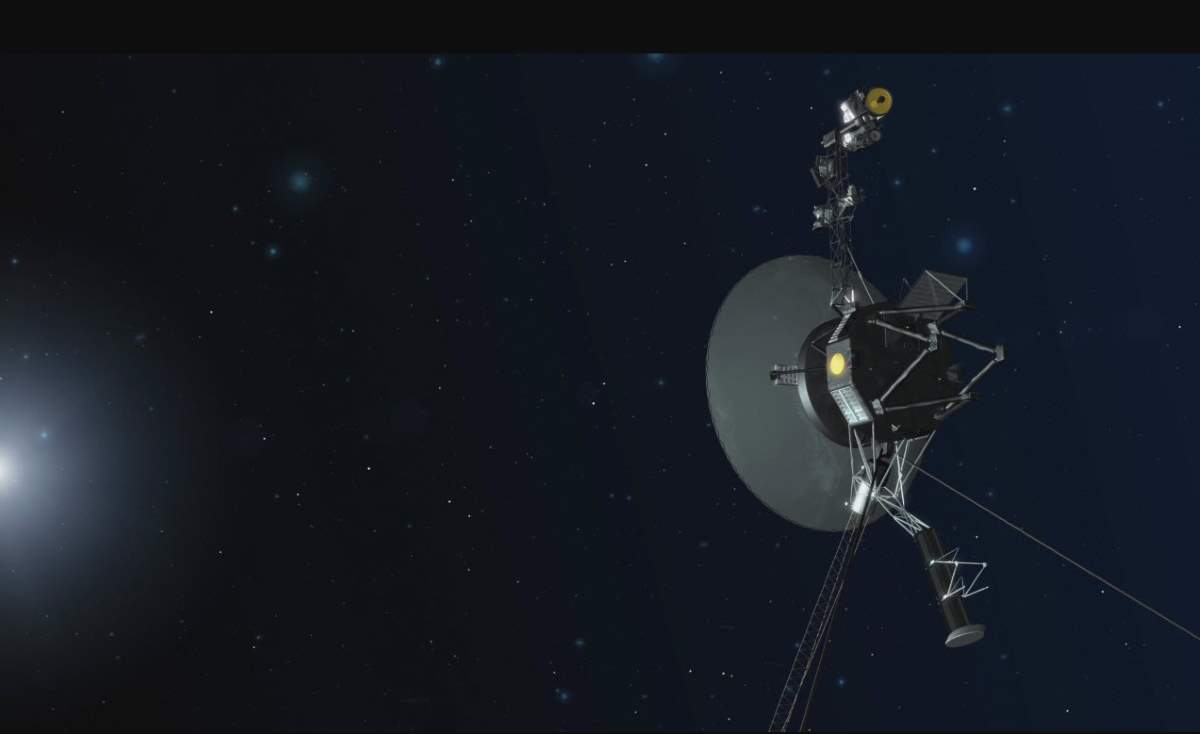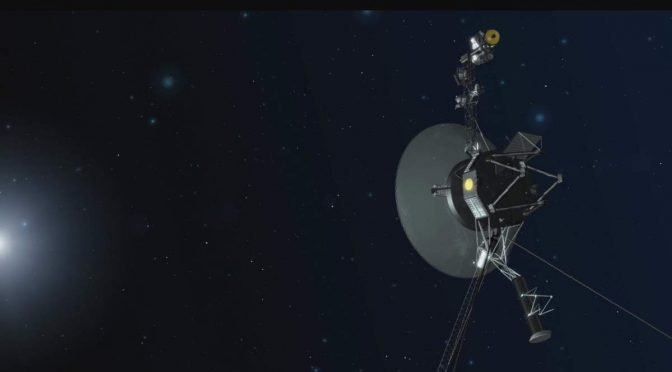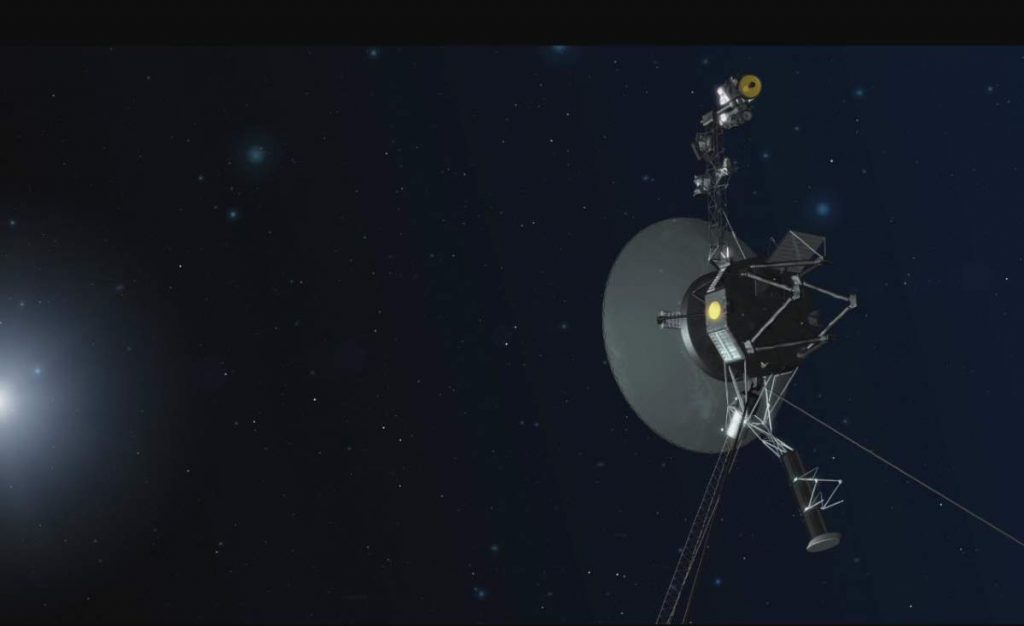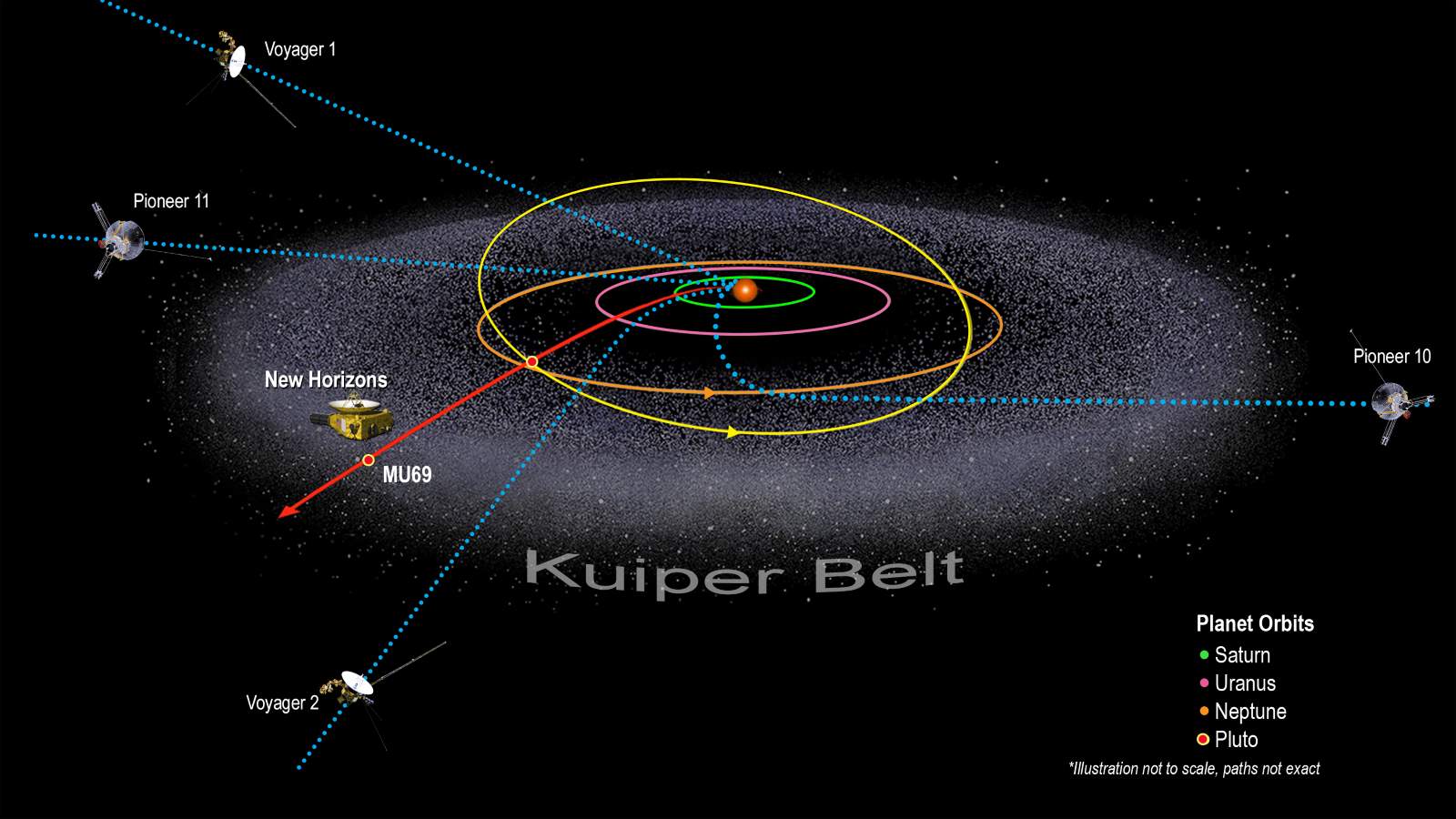On Tuesday, November 28, 2017, a set of thrusters aboard the Voyager 1 spacecraft successfully fired up for the first time since November 1980, after 37 years without use.
Voyager 1 is a space probe launched by NASA on September 5, 1977. Having operated for more than 40 years as of December 4, 2017, the spacecraft still communicates with the Deep Space Network to receive routine commands and return data. At a distance of 141 AU (see notes 1) (2.11×1010 km) or approximately 13 billion miles (21 billion km) from the Sun as of November 22, 2017, it is NASA’s farthest and fastest spacecraft. It is also the only human-made object in interstellar space, within the environment between the stars.
Voyager 1 already completed its primary mission (flybys of Jupiter, Saturn, and Saturn’s large moon, Titan), on November 20, 1980, with the flyby of Saturn. On August 25, 2012, Voyager 1 became the first spacecraft to cross the heliopause and enter the interstellar medium.

Voyager 1 Thrusters
The Voyager 1 spacecraft relies on small devices called thrusters to orient itself so it can communicate with Earth. These thrusters fire in tiny pulses, or “puffs,”, like the ones you may have seen in science-fiction movies and TV shows, which last mere milliseconds, to subtly rotate the spacecraft so that its antenna points at our planet.
Since 2014, engineers have noticed that the thrusters Voyager 1 has been using to orient the spacecraft, called “attitude control thrusters,” have been degrading. Over time, the thrusters require more puffs to give off the same amount of energy. It’s impossible to fix them or re-tune them, so the Voyager team assembled a group of propulsion experts at NASA’s Jet Propulsion Laboratory, Pasadena, California, to study the problem.
Chris Jones, Robert Shotwell, Carl Guernsey, and Todd Barber analyzed options and predicted how the spacecraft would respond in different scenarios. They agreed on an unusual solution: Try giving the job of orientation to a set of thrusters that had been asleep for 37 years.
In the early days of the mission, Voyager 1 flew by Jupiter, Saturn, and important moons of each. To accurately fly by and point the spacecraft’s instruments at a smorgasbord of targets, engineers used “trajectory correction maneuver,” or TCM, thrusters that are identical in size and functionality to the attitude control thrusters, and are located on the backside of the spacecraft. But because Voyager 1’s last planetary encounter was Saturn, the Voyager team hadn’t needed to use the TCM thrusters since November 8, 1980. Back then, the TCM thrusters were used in a more continuous firing mode; they had never been used in the brief bursts necessary to orient the spacecraft.
All of Voyager’s thrusters were developed by Aerojet Rocketdyne. The same kind of thruster, called the MR-103, flew on other NASA spacecraft as well, such as Cassini and Dawn.
On Tuesday, Nov. 28, 2017, Voyager engineers fired up the four TCM thrusters for the first time in 37 years and tested their ability to orient the spacecraft using 10-millisecond pulses. The team waited eagerly as the test results traveled through space, taking 19 hours and 35 minutes to reach an antenna in Goldstone, California, that is part of NASA’s Deep Space Network.
On Wednesday, November 29, the team learned that the TCM thrusters worked perfectly – and just as well as the attitude control thrusters.
The mission team will probably do a similar TCM test on Voyager 1’s twin spacecraft, Voyager 2 at some point, but that spacecraft’s attitude-control thrusters are in better shape than those of Voyager 1. The Voyager 2 probe had been launched two weeks earlier, on August 20, 1977. Despite being launched later, Voyager 1 reached both Jupiter and Saturn sooner, following a shorter trajectory. Voyager 2 is also on course to enter interstellar space, likely within the next few years.
Voyager 1’s extended mission is expected to continue until around 2025 when its radioisotope thermoelectric generators will no longer supply enough electric power to operate its scientific instruments.
In 1990, Voyager 1, took a photo of planet Earth from a record distance of about 6 billion kilometers (3.7 billion miles, 40 AU) from Earth. The photo is known as the Pale Blue Dot.
Notes
- An Astronomical Unit (AU) is the average distance between Earth and the Sun, which is about 93 million miles or 150 million kilometers.
Sources
- Voyager 1 on W
ikipedia - “Voyager 1 Fires Up Thrusters After 37 Years” on NASA.gov
- “Voyager 1 Just Fired Up its Backup Thrusters for the 1st Time in 37 Years” on Space.com
- Moon Landings: All-Time List [1966-2025] - February 2, 2025
- What Is Max-Q and Why Is It Important During Rocket Launches? - January 16, 2025
- Top 10 Tallest Rockets Ever Launched [2025 Update] - January 16, 2025




One reply on “Voyager 1 Fired Up its Thrusters for the first Time in 37 Years”
What a fantastic report about Voyager and congrats to the team that built both of them and the brains that are driving them. You really do deserve all the accolades u get.👍👍👍